
So, about that canned pumpkin you buy every year…
It’s not actually pumpkin. Well, probably not anyway.
The truth is most canned pumpkin is actually squash. Legally, the FDA makes no distinction between pumpkin and squash when it comes to food labels, and so most canned foods companies opt to process the more flavorful and space-efficient squash instead of pumpkin and figure we’ll be none the wiser.
I’m ok with that, simply because squash makes for a better pumpkin pie than pumpkin does. If you’ve ever tried actual pumpkin puree you’ll know what I mean, it’s not nearly as flavorful, and is often stringy and watery.
I’ve played with making my own homemade pumpkin puree for pies before, but this year I wanted to test and see, once and for all, which type of squash makes the best pumpkin pie.
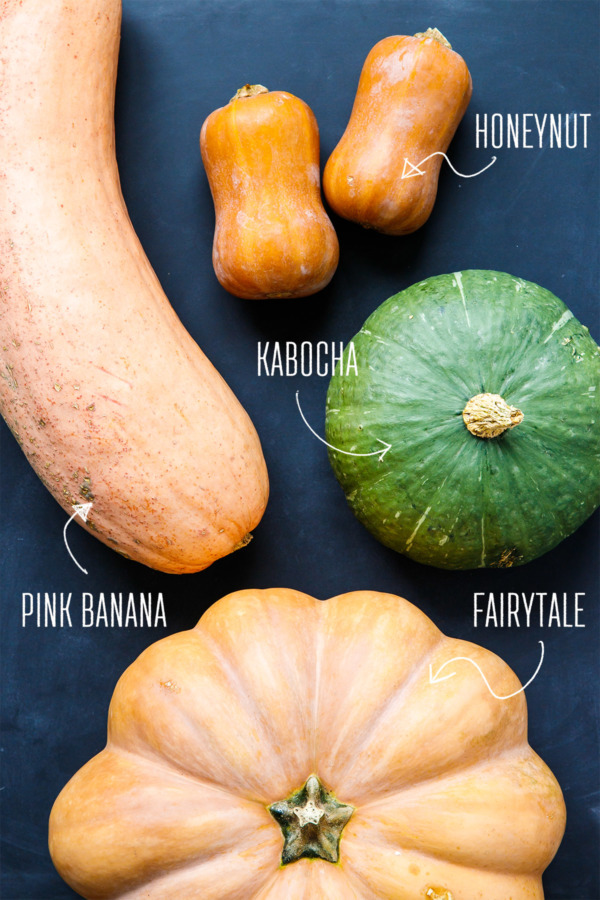
I picked up a few different kinds of squashes from the grocery and our local farmers market. This time of year our market is filled with literally hundreds of different kinds of pumpkins, squashes, and gourds as far as the eye can see. I questioned the farmers as to what they would recommend for pie, and more than one directed me to the uniquely shaped Pink Banana… it’s definitely the oddest looking squash of the lot, and one I’ve actually cooked with before (so its recommendation didn’t come as a surprise this time).
I ended up with 4 squashes to test: Honeynut, Kabocha, Pink Banana, and Fairytale. Only the last one is actually a pumpkin, all the others are technically squashes. But again, no legal distinction and what have you so we’re calling the end result pumpkin pie no matter what. Because, let’s face it, squash pie just doesn’t sound as appealing.

To begin with, I roasted all the squashes until soft, then pureed them in a food processor (some required draining as well to achieve a mostly uniform consistency). Considering some of these squashes are rather large, I measured out the resulting puree into 15 ounce bags (equivalent to one can of pumpkin) and froze what I wasn’t going to use. Homemade pumpkin puree freezes beautifully, so if you’ve got a larger squash on your hands, definitely don’t let it go to waste.
Generally, about 2 pounds of squash will yield 1 cup (8 ounces) of puree, so you need about 3 pounds of squash for one full size pie.
I used Bravetart’s pumpkin pie recipe (which actually calls for butternut squash) as my base, and simply swapped out the different squash purees. I also made one pie with Libby’s canned pumpkin as a control, because I think that’s what all of us expect as far as flavor and texture goes.
From there, we were able to taste test and compare the one variable that changed from pie to pie: the squash.

Ok, enough chatter. I know you’re all wondering…
Which cucurbita reigns supreme?

The Verdict?
Taylor and I meticulously tasted each pie, as well as our neighbor Richard who so unselfishly lent us his tastebuds. While I knew which pie was which (based on color and the unique crust I put on each one), neither of them did. Very scientific-like. Surprisingly, we all unanimously agreed on our favorites and least favorites.
The winners were definitely the Honeynut and Pink Banana squashes. Both were flavorful, with sweet notes of fresh pumpkin and a creamy overall texture. I may end up making my final Thanksgiving pie with a mixture of both for this reason. If you can’t find honeynut, butternut will do as well (though it won’t be quite as flavorful or sweet).
Our least favorites were the Kabocha and Fairytale, for different reasons. The kabocha simply produced a dry and pasty pie. If it had been super flavorful, it might have worked with an adapted recipe, but as it was it didn’t taste like much of anything. The Fairytale also had an unappealing texture on the opposite end of the spectrum; this pie had a watery and almost curdled consistency. The taste was also noticeably vegetal, like a raw, uncooked pumpkin smells. Long story short: keep the fairytale pumpkin on the porch by your mums: it’s better for decoration than for eating.

You can see the obvious differences in textures between the different varieties. The thick yellow puree on the left is from the kabocha squash, and the orange one on the right is the stringier, waterier fairytale pumpkin (this one strained off nearly half its volume in water!) It’s a marked difference that is apparent in the final pie too. (Totally unintentional that this photo happened to be of the two kinds we didn’t like).

The honeynut and banana squashes, on the other hand, fell somewhere in the middle in terms of moisture/creaminess. The banana definitely drained off more liquid (the honeynut only a few tablespoons, you could probably skip that step) but they both had a wonderful texture that proved perfect for pie.
From top to bottom: Kabocha, Pink Banana, Fairytale, Honeynut, and Libby’s (ignore the Sgt. Pepper photobomb – he LOVES squash and wouldn’t leave me alone for one second while I was shooting them).

Tasting notes:
Honeynut: (Pictured above). Sweet and flavorful, this one probably came the closest to the Libby’s pie in terms of texture and color, but with a brighter, fresher flavor. The honeynut puree didn’t need very much draining (it only gave off a few tablespoons of liquid, so you could probably skip this step entirely). This pie was noticeably sweeter in flavor and darker orange in color than the other kinds, more like what you’d expect from a classic pumpkin pie recipe.
Pink Banana: Our other favorite, this giant squash made a beautifully creamy pie with just the right amount of fresh pumpkin flavor. It was lighter in color than the honeynut, with a milder squash flavor that allowed more of the spice to come through. This squash is more watery than the honeynut, so I’d definitely advise draining it overnight before using the puree.
Kabocha: This squash had an entirely different texture than the others. It was much denser, drier, and not stringy at all. When I made the puree I was optimistic for this reason, but the final pie was noticeably pasty and dry and, well, not appealing in the least. It also didn’t have much flavor. Bummer.
Fairytale: This pumpkin was really watery and stringy. I don’t know if a smaller one would’ve been better, but we weren’t fans of the final texture or the odd vegetal flavor of the pie. This pie tasted like a fresh cut pumpkin smells, which wasn’t necessarily a good thing. The pink color was also a bit weird too.
Libby’s: I have a feeling Libby’s cooks their pumpkin longer, since the flavor is much more concentrated and almost roasty. I think you could maybe replicate this by stewing or roasting your pumpkin puree further after making it. Typically, I’ve found other brands of canned pumpkin to be milder in flavor and I prefer them over Libby’s (including Whole Foods Organic Pumpkin Puree and Trader Joe’s pumpkin puree). Maybe those two are actually pumpkin? We may never know.

For those of you interested in the pie recipe itself, I won’t be posting it here, but definitely check out the Bravetart cookbook where you can find both the filling and crust recipes. It’s easily my new favorite baking cookbook. Her pie crust comes together more like a laminated pastry dough instead of a typical pie crust, with a higher proportion of butter and thus less worry about developing gluten. As a result, it’s much easier to work with than many pie doughs I’ve tried.
The pie itself is quite good, perfectly custardy in texture, albeit a bit sweet for my tastes. It calls for homemade sweetened condensed milk as well as homemade squash puree (that’s right, no can opener is required for this pie! I love that.)
Next time, I’d still do the condensed milk but either with less sugar, or I’d leave out the extra 1/4 cup of brown sugar that is added in later. I’d also probably reduce the ginger a bit because Taylor, for whatever reason, is ultra sensitive to ginger (I think I’ve overdone it on the ginger before, most likely. ha!)

And no, I did not actually bake 5 full size pumpkin pies (that would’ve been ridiculous). Rather, I baked one 7-inch pie and four baby 5-inch pies using mini pie tins. The 7-inch pie is exactly half of a 9-inch pie, and the mini ones are about 1/6 of a recipe if you do the math, though more like 1/8 when you take into account the volume of the crust. It worked out quite perfectly, as I made one full pie recipe and it divided up almost perfectly into my 5 pies.
Who would’ve thought all that middle school math (ratios and fractions and proportions) and science (setting a control and variables) would come in so handy (I remember thinking way back then, when will I ever use this?) Maybe middle school teachers need to incorporate more pie and fewer pie charts into their lesson plans.




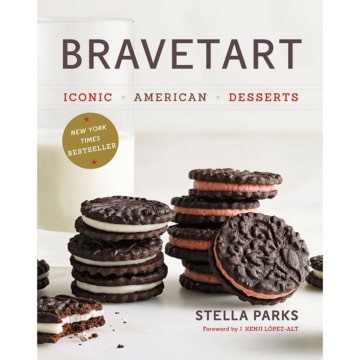
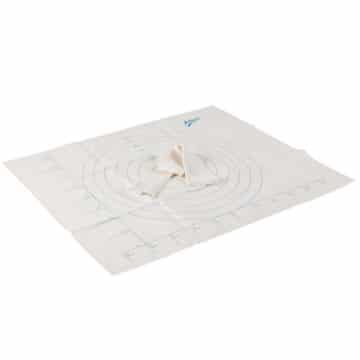



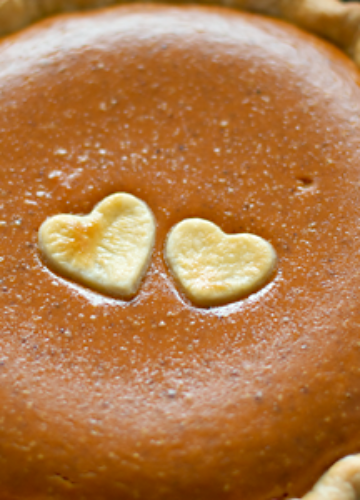


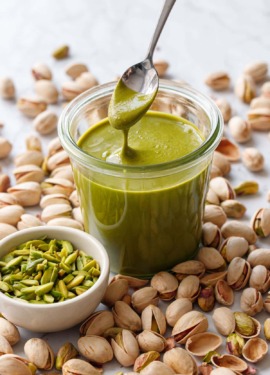
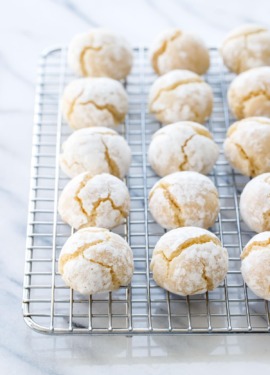



Interesting study. I’m curious what kind of kabocha you used. We’ve used Sunshine kabocha for our pumpkin pies for the past four years and love the taste and texture. Also, our purée from kabocha is definitely orange, not yellow like yours. It tastes a like a cross between pumpkin (which, let’s face it, doesn’t have a lot of taste by itself) and sweet potatoes — a taste we like. We also find the pies to be smooth and creamy, not dry at all. We do use a different recipe (the one from Libby’s — lol).
I like butternut squash but will try a few of these. One thing I do with ginger is peel it and freeze it (or galangel which is less stringy) the then grate it in with a zester. I like it much better than ginger powder. I also grate my own nutmeg . For a little different taste, use Chinese 5 spices with the fresh ginger. Thank you for your very helpful article and give Sgt. Pepper a tickle behind the ears for me.
Years ago, I decided that I wanted to grow giant pumpkins, but when I found out that you needed at least a 30’x30′ space for one plant, and my whole garden was 20’x20′, I looked for alternatives. I was reading Ruth Stout’s books and gathering bagged leaves on my way home from work so that I could mulch garden like her, and learned that her favorite squash for baking was the Blue Hubbard. This seemed like the answer to my desire for giant squash, as she had grown a 54 pounder one year! I’ve grown it, and made pies from it, every year, and they are excellent. My biggest one is only 23 pounds though, although I grew a total of 84 pounds of them on my vine this year! Maybe next year I’ll knock off all but the biggest and beat Ruth’s record.
Due to this article and others like it, I also grew Red Kuri and Honeynut this year, made a pie from each and my wife and I had a taste test. The Blue Hubbard still won. Honeynut was prettiest but the flavor was too potent (but might have been best in a straight pumpkin pie without all other sweeteners- we actually prefer to use the “Sweet Potato and Pecan Pie with Cinnamon Cream” recipe from oprah.com with squash puree substituted for the sweet potato), Red Kuri was almost too citrusy, but maybe my spoonful of zest was more rounded than for the others. All were tremendous, though!
Just read “The Perfect Pumpkin” by Gail Damerow, her discussion of “culinary pumpkins” have me thinking about growing “Winter Luxury”, “Long Island Cheese Pumpkin”, “Rouge Vif D’etampes” and Abe Lincoln’s favorite “Illinois Squash” (or White Crookneck pumpkin, doesn’t look like a pumpkin at all). I make room for several vines by planting around an enclosed “Japanese Tomato Ring” type compost pile and just winding the vines around the circle, then turning them loose up an embankment. I give away what I don’t need at the school where I work, lots of good will.
Nice article!
great article, thanks…. I never liked pumpkin pie until I started making them from scratch with my home grown squash. I now grow varieties recommended for pies.
I like Red Kuri the best, also North Georgia Candy Roaster. I use the All Butter crust from Cook’s Illustrated…. but hard to beat Butternut, and they are easiest to grow, being resistant to the vine borer. may try the honeynut…
Why dose buttercup squash never get a mention I like and it is not the same as Kabosha I don’t care for Kabosha , just wondering why buttercup is so hard to find and never gets a mention in squash recipes
Thanks it has a nice texture and sweet flavour , it has a funny bottom end
Apparently you haven’t ever tried Dickinson pumpkin.
I haven’t! This is by no means an exhaustive list of all the kinds of squashes/pumpkins out there (I’d be baking for years, lol!) I’ll definitely keep my eyes peeled for that variety though come fall!
I have made pumpkin pies with the fairy tale pumpkins. It was lighter then the ones I have bought at the store (Less dense). I was wondering if you need to peel off the shell after baking. Or purée it with the shell.
Definitely get rid of the shell! Once it’s roasted it’s very easy to scoop the flesh out of the shell. ;)
Interesting comparison! I roasted squash and made the condensed milk for Stella’s pie recipe this weekend. I used butternut squash; I’m glad to hear that it sounds like the right choice. (Honeynut squash wasn’t available.) I’m also grateful for the pie review. The pie recipe is available on Serious Eats, and a reviewer there also said it was too sweet. The condensed milk itself has more sugar than my previous favorite pumpkin pie recipe, so adding additional brown sugar seemed excessive. I’ll reduce it, or perhaps leave it out altogether.
I’ve had good success cooking and pureeing a sugar pie pumpkin for baked goodies. As I understand it is specifically breed for this. I freeze the leftovers in 1/2 cup increments so that I can defrost just the amount I need for muffins etc.
I first saw those honey nut a few years ago at Blue Hill Stone Barn restaurant in upstate NY! I definitely need to get my hand on one of those pink bananas though – I haven’t seen those in Chicago, but maybe I need to check out more farmer’s markets. This was such a fun post!
I’d ship you one but it’d probably cost like $82. lol.
I have seen the seeds for Dickinson offered for sale at Baker Creek and Park Seed.
Your post inspired me to do a tiny bit of web searching and I read that botanists say it’s difficult to differentiate between pumpkins and squash because there’s no botanical definition for pumpkins.
Who knew?
And I love the photobomb by your kitty!
I just google image searched it and it looks a lot like a pumpkin I got a few years ago from my CSA! I had no idea what variety it was but it made one of my favorite pies:
https://www.loveandoliveoil.com/2010/12/old-fashioned-pumpkin-pie-with-bourbon-whipped-cream.html
If I had the capacity to grow my own squash I totally would. :)
I’ve made my own puree from Sugar Pie pumpkins, Bon Bon squash and butternut. Frankly, none of them rose to the level of good ole Libby’s Libby’s Libby’s. If I could dramatically improve on the canned standard, I’d be willing to do the work. But I couldn’t. And it seems like you could not either. But I am intrigued about the honey nut. That might be a good squash for eating.
I’ve tried Whole Paycheck totally organic pumpkin and even it isn’t as good as Libby’s.
As for Libby’s, they use a variety called Dickinson pumpkin, which could be called squash but is a very close cousin of the pumpkin. The Dickinson pumpkin was developed by Libby’s, which makes 90 percent of filling used in pumpkin dishes in the U.S. And It’s a winner.
Very fun post.
I think if you’re used to Libby’s then fresh squash definitely isn’t going to taste the same no matter what kind you use, it’s a lighter, fresher flavor overall, not as rich and roasty. Same for other brands of canned pumpkin (which I’m guessing are using different varieties of squash/pumpkin). A matter of personal preference I guess. :)
Have you ever seen Dickinson pumpkins anywhere? Libby’s probably keeps a tight wrap on them, lol.
Love the scientific method that went into this post. :) The honeynut squashes look similar in size to a butternut squash, right? I’ve always steered clear of some of the intimidating looking squash (like the pink banana and kobucha) just because they are hard to cut into. Maybe I need better knives.
My cat is probably the only cat on the planet who won’t eat squash. The vet said she’d love it. Nope. She wouldn’t have any of it. Little weirdo.
Honeynut is actually a smaller, sweeter version of a butternut. It’s darker in color and maybe 6″ in size. A butternut wouldn’t have quite as concentrated a flavor or sweetness, but would probably be the best substitute in this case!
And yes, bigger squashes are tricky to cut. A hammer and chisel is often the best tool, lol.
This was SO much work for you! Omg…first finding and carrying all those heavy squashes, cleaning them, roasting them, pureeing them, draining, freezing extra, making pie crust, making pies…WOW and thank you!
I have never heard of pink banana! I wonder what honey nut would be like on it’s own, not in a pie, just for roasting. I need to find one and try. I love sweet squash :) On it’s own kabocha is pretty sweet to me but I’ve never made a pie with it. Knowing it’s texture can be thick and definitely dry, I guess it’s not good for pies.
Sgt. Pepper is adorable and I love that he loves squash!
I actually used the honeynut for the cider roast chicken recipe I posted a few weeks ago… and it’s amazing! That’s where I first discovered it, and thought to myself it’d make a great pie. :)